Vietnam is known for being one of the most popular destinations in Southeast Asia and in the world. With its rich culture, stunning landscapes and delicious cuisine, it is an ideal destination for those looking for an unforgettable travel experience.
Exploring the entire beautiful country will take a considerable amount of time, but you don’t need to worry because we have carefully selected the most distinctive places to provide more specific instructions to visitors. You can choose Vietnam Package Tours for the best tour experience.
Vietnam, a land of captivating beauty and rich history, beckons travelers with its diverse landscapes and vibrant culture. From bustling urban hubs to serene natural wonders, here’s a comprehensive guide to the best things to do in this enchanting country.


Best Things To Do In Vietnam – Crafting Your Perfect Vietnam Itinerary!
Show table of content
- 1. Exploring the Vibrant Cities
- 1.1 Hanoi – The Timeless Charm of the Capital
- 1.2 Ho Chi Minh City: The Modern Metropolis
- 2. Vietnam natural wonders
- 2.1 Halong Bay: A UNESCO World Heritage Site
- 2.2 Sapa: The Enchanting Mountain Retreat
- 2.3 Phong Nha – Ke Bang National Park
- 3. Immersing in Vietnamese Culture
- 3.1 Ancient Town of Hoi An – A Glimpse into the Past
- 3.2 Hue – The Imperial City
- 3.3 Dalat – The City of Eternal Spring
- 4. Discover Vietnamese Cuisine
- 4.1 Vietnamese Cuisine: A Harmonious Blend of Flavors
- 4.2 Cooking Classes and Food Tours
- 5. Beautiful vietnam beaches
- 5.1 Nha Trang – The Riviera of the South China Sea
- 5.2 Mui Ne: The Coastal Haven
- 6. The history of the Vietnam War
- 6.1 Cu Chi Tunnels – A Remnant of Vietnam War
- 6.2 War Remnants Museum: Preserving the Past
- 6.3 Dmz in Vietnam
- 7. Experiencing the Festival in Vietnam
- 7.1 Tet Festival – Vietnamese Lunar New Year
- 7.2 Mid-Autumn Festival: A Celebration of Children
1. Exploring the Vibrant Cities
1.1 Hanoi – The Timeless Charm of the Capital
Hanoi is the capital city of Vietnam and is located in the northern part of the country, known for its ancient architecture, which reflects the rich cultural heritage of Vietnam.
- Historical Landmarks and Monuments
One of the most famous landmarks in Hanoi is the Temple of Literature, which was built in the 11th century during the reign of Emperor Lý Thánh Tông and is considered the country’s first university.
One Pillar Pagoda is one of the iconic thousands of years old architectural works of Hanoi. One Pillar Pagoda has a unique architecture, constructed in 1049 during the reign of King Ly Thai Tong, this temple is not only a spiritual symbol but also a cultural symbol of Vietnam.
Besides, Hanoi is also home to many grand colonial buildings that reflect its French colonial past, numerous temples, pagodas, and monuments.


- Bustling Markets and Authentic Street Food
Hanoi’s markets are a hub of activity and provide a fascinating glimpse into the city’s culture. One of the most vibrant markets is the Dong Xuan Market, which is the largest indoor market in Hanoi and sells everything from clothing to souvenirs to street food. For a more authentic experience, visitors can check out the local markets in the suburban areas around Hanoi, such as the Quang Ba Flower Market or the Long Bien Market
In addition, Hanoi is known for its diverse cuisine. From most famous dishes around the world such as pho, a noodle soup to popular street foods including Banh Mi (a Vietnamese sandwich), Bun Cha (grilled pork served with noodles), and Cha Ca (grilled fish served with herbs and rice noodles), there is something that suitable for different tastes and preferences of visitors.


1.2 Ho Chi Minh City: The Modern Metropolis
Ho Chi Minh City, also known as Saigon, is a bustling metropolis located in Southern Vietnam. As the largest city in Vietnam, it is a hub of commerce, culture, and entertainment.
- Iconic Attractions and Landmarks
Unlike Hanoi, a-thousand- year capital with ancient architecture, Saigon’s history is a story of resistance, resilience, and growth, and its landmarks are a testament to the city’s enduring spirit. Exploring landmarks like the War Remnants Museum, Notre-Dame Cathedral Basilica, and Independence Palace can provide visitors with an opportunity to learn more about the city’s rich history and culture.



- Vibrant Nightlife and Entertainment
Known as a sleepless city in Vietnam, the city offers an exciting and diverse nightlife and entertainment scene. The city is home to numerous bars, clubs, and restaurants, with popular areas for nightlife including Bui Vien Street, Pham Ngu Lao Street, and Nguyen Hue Walking Street. Saigon also boasts a variety of rooftop bars that offer stunning views of the city skyline and a sophisticated atmosphere. For those looking for cultural experiences, night markets are one of the best destinations for locals and tourists to enjoy local cuisine, shopping, and immerse in the vibrant nightlife.
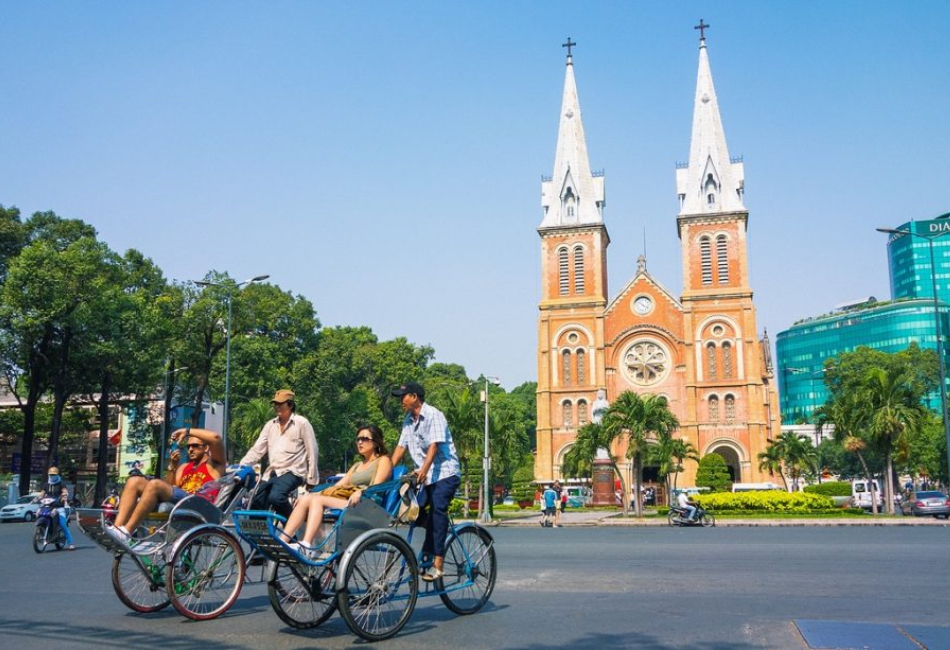

2. Vietnam natural wonders
Nestled in Southeast Asia, Vietnam is a land graced by Mother Nature’s finest creations. From the towering peaks of the north to the sun-kissed beaches of the south, this captivating country boasts breathtaking natural wonders.


2.1 Halong Bay: A UNESCO World Heritage Site
Halong Bay, located in Vietnam, is known for its stunning natural beauty, with thousands of limestone islands and islets rising out of the emerald waters. Recognized by UNESCO twice as a World Heritage Site, Halong Bay is one of the top locations in Vietnam for domestic and international tourists.
Experience the breathtaking natural beauty of Halong Bay like never before by joining us on a luxury 5-star cruise


- Scenic Cruises and Kayaking Adventures
Exploring Halong Bay by Scenic cruises gives visitors a chance to unwind and take in the beauty of the bay from a different perspective. There are many different types of cruises for visitors to choose, from luxury cruises with onboard spas and fine dining, to more budget-friendly options.
Kayaking is another great way to explore Halong Bay. Boating in the emerald green waters of the sea, exploring the pristine and magnificent landscape of islands and caves, you have an unforgettable experience.
- Cave Exploration and Beach Vacation
Visiting the caves in Halong Bay is a must-try activity for visitors who want to explore the splendor of this World Heritage Site. Exploring these caves provides an opportunity to witness some of the most breathtaking natural beauty in Vietnam.
The beaches in Halong are among the greatest in Vietnam. There are literally thousands of beaches, ranging from tiny and desolate to large and crowded. These beaches offer opportunities for swimming, sunbathing, and relaxing, and often have restaurants and other amenities nearby.


2.2 Sapa: The Enchanting Mountain Retreat
Sapa is a mountainous region located in the northwest of Vietnam, known for its stunning natural scenery and diverse ethnic communities.
- Trekking through Rice Terraces and Ethnic Villages
The rice terraces in Sapa are some of the most breathtaking and picturesque landscapes in Vietnam. The emerald green rice paddies, surrounded by misty mountains and lush forests, provide a stunning backdrop for trekking. Besides that, a visit to ethnic villages in Sapa offers a unique and authentic experience that allows visitors to learn about the local culture and way of life while admiring the stunning natural beauty of the region.


2.3 Phong Nha – Ke Bang National Park
Phong Nha-Ke Bang is a national park in the center of Quang Binh province in north-central Vietnam. It is home to the largest cave in the world and covers 300 different grottos and caves.
- Exploring Majestic Caves and Underground Rivers
Exploring the majestic caves and underground rivers in Phong Nha caves offers visitors a unique opportunity to witness some of the world’s most impressive geological formations. The caves are home to vast networks of underground rivers, massive stalactites and stalagmites, and stunning limestone formations that have been shaped over millions of years.


- Jungle Treks and Wildlife
Jungle treks in Phong Nha Ke Bang National Park offer visitors the opportunity to explore the park’s diverse ecosystem, which is home to a wide range of wildlife species. Besides, visitors can also experience the lush jungle environment and admire the park’s stunning natural beauty, including towering limestone mountains, crystal-clear rivers, dense forests and beautiful waterfalls.
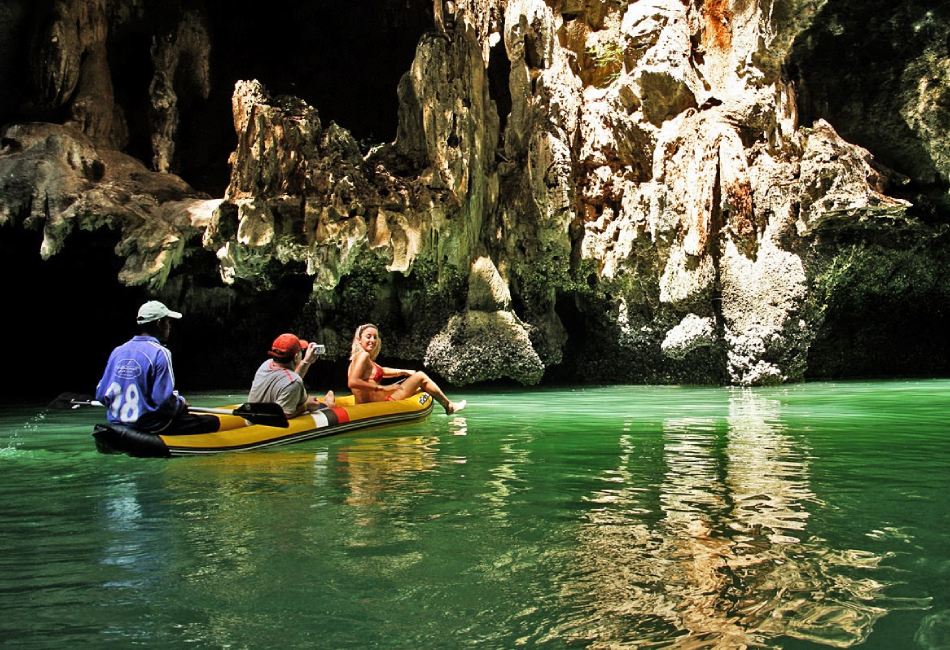

3. Immersing in Vietnamese Culture
Vietnamese culture is a rich and vibrant blend of indigenous traditions, Chinese and French influences, and modern Western values. The country’s long and complex history has given rise to a unique set of customs, beliefs, and artistic expressions that are deeply rooted in the daily lives of its people.
Get a glimpse into the fascinating cultural traditions of Vietnam on our Vacation Package to Vietnam
3.1 Ancient Town of Hoi An – A Glimpse into the Past
Hoi An, located in central Vietnam, is a UNESCO World Heritage Site known for its well-preserved historic architecture and ancient temples.
- Historic Architecture and Ancient Temples
Coming to Hoi An, visitors would be infatuated with the charming old town, which is filled with unique buildings that reflect a blend of Vietnamese, Chinese, and Japanese architectural styles. Visiting the hundred year old ancient houses of Hoi An with old space filled with nostalgia will transport you to the sixteenth and seventeenth century harbor town of Hoai Pho.


- Traditional Crafts and Tailored Clothing
Another experience in Hoi An Ancient Town that visitors should not miss is traditional crafts and tailored clothing. There are many shops and markets to find unique handmade souvenirs such as lanterns and pottery. Besides, visitors to custom-made clothes shops can also choose from a wide range of fabrics and styles and have their garments created to their specific measurements.


3.2 Hue – The Imperial City
Hue is a city located in central Vietnam, on the banks of the Perfume River. Hue is famous for its rich history, culture, and architecture, which reflect the influence of the Nguyen dynasty and the imperial court.
- Imperial Citadel and Royal Tombs
The Imperial Citadel is a must-visit attraction, as it served as the seat of the Nguyen dynasty emperors and boasts a stunning array of palaces, temples, and gardens. Visitors can also explore the nearby Royal Tombs, which are the final resting places of the emperors and feature beautiful architecture and intricate decorations.
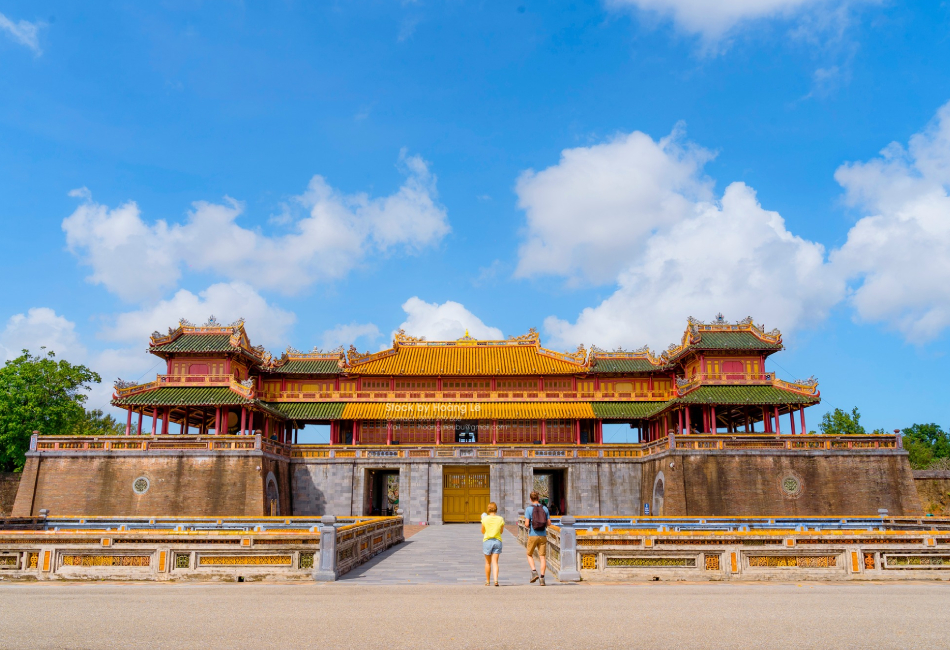

- Perfume River Cruises and Culinary Delights
For a more relaxed experience, visitors can take a cruise along the Perfume River and enjoy the beautiful scenery and Hue’s traditional music performances such as Hue Royal Refined Music, Ca Hue and folk songs. Hue is also famous for its diverse cuisine, which include the famous Hue-style beef noodle soup and a variety of traditional dishes.
Experience the charm and allure of Hue on our expertly guided Hue City Tour.


3.3 Dalat – The City of Eternal Spring
- Flower Gardens and French Colonial Architecture
Dalat is a charming city located in the Central Highlands of Vietnam, famous for its mild climate and beautiful natural scenery. Coming to Da Lat, visitors can explore the many gorgeous flower gardens and parks, filled with colorful blooms as well as enjoy stunning views of the surrounding hills and valleys. The city center features many examples of French colonial architecture, including beautiful buildings and villas dating back to the early 20th century.


- Adventure Sports and Coffee Plantations
For adventure seekers, Dalat offers a range of outdoor activities such as trekking, canyoning, and mountain biking. Visitors can also take a tour of the local coffee plantations and learn about the region’s thriving coffee industry. Overall, Dalat is an ideal destination for nature lovers, adventure seekers, and anyone looking for a unique cultural experience in Vietnam.
4. Discover Vietnamese Cuisine
Vietnamese cuisine is renowned for its fresh and flavorful dishes, which feature a unique blend of herbs and spices. With distinct regional specialties, each dish is a reflection of Vietnam’s diverse geography and cultural history, making it a must-try for food lovers.
4.1 Vietnamese Cuisine: A Harmonious Blend of Flavors
Vietnamese cuisine is known for its unique blend of flavors, textures, and fresh ingredients, which make it stand out among other Southeast Asian cuisines.
Dishes like banh mi and pho, have become famous around the world for its bold flavors and aromatic herbs and spices, as well as its use of fresh, healthy ingredients like vegetables, herbs, and lean proteins.
Visitors can try iconic Vietnamese dishes at street vendors and local restaurants throughout the country. Besides, exploring local markets is a great way to discover new culinary delights and experience the vibrant culture of Vietnam.


4.2 Cooking Classes and Food Tours
Taking a cooking class or food tour is a great way to immerse yourself in the art of Vietnamese cooking. Visitors can unleash their inner chef and learn how to prepare traditional dishes such as pho, bun cha, and banh xeo from skilled local chefs. Taking food tours also give visitors the chance to explore local markets and sample a variety of street foods and local specialties.


5. Beautiful vietnam beaches
Vietnam is home to some of the most beautiful beaches in Southeast Asia, attracting millions of tourists each year. With more than 3,000 kilometers of coastline along the South China Sea, Vietnam offers an extensive range of pristine beaches with crystal clear waters, white sands, and stunning landscapes.
5.1 Nha Trang – The Riviera of the South China Sea
Nha Trang is a coastal city and capital of Khanh Hoa Province, on the South Central Coast of Vietnam. The city is often referred to as the “Riviera of the South China Sea” thanks to its stunning beaches and crystal-clear waters.
- Sun-Kissed Beaches and Island Excursions
Known for its sun-kissed beaches and island excursions, Nha Trang typically offers a variety of interesting activities for visitors to enjoy. Visitors can enjoy a variety of water sports and participate in activities such as snorkeling and scuba diving to discover the diverse marine life in the area. Additionally, visitors can enjoy a relaxing day on the beach or take a walk through the local markets to experience the culture and cuisine of the region.


5.2 Mui Ne: The Coastal Haven
Nestled on the southeastern coast of Vietnam, Mui Ne is a picturesque coastal town that captivates tourists seeking a tranquil getaway. With its long stretches of pristine beaches, towering sand dunes, and crystal-clear waters, the town offers visitors a unique and breathtakingly beautiful landscape.
- Sand Dunes and Kiteboarding
Visitors can enjoy a range of activities on the stunning sand dunes, such as sandboarding, ATV tours, and photography. Watching the sunset over the sand dunes is another popular experience that should not be missed. Additionally, Kiteboarding is another fascinating part for sport enthusiasts. With an advantage of the strong winds and shallow waters, Mui Ne has perfect conditions for the sport.


- Fishing Villages and Seafood Delicacies
Mui Ne is also known for its fishing villages and seafood delicacies. Visitors can take tours of the fishing villages to learn about traditional techniques to catch fresh seafood daily, and the importance of fishing to the local economy. Besides, visitors can also enjoy delicious local dishes such as grilled squid, steamed clams, and fish hotpot, prepared using traditional Vietnamese spices and recipes.
6. The history of the Vietnam War
The Vietnam War (also known as The resistance war against the US) took place from 1954 to 1975 between South Vietnam, supported by United States forces, and Communist North Vietnam. It was one of the most devastating conflicts in Vietnamese history, causing immense suffering and loss of life. The war ended with the fall of Saigon, the capital of South Vietnam, in 1975, and the reunification of Vietnam under communist rule.


6.1 Cu Chi Tunnels – A Remnant of Vietnam War
Cu Chi Tunnels are an underground network of tunnels in Ho Chi Minh City, Vietnam that served as a base for the Viet Cong during the Vietnam War. A visit to Cu Chi Tunnels is an authentic experience for history enthusiasts.
- Underground Tunnel Complex and Guerrilla Warfare
One of the most fascinating aspects of Cu Chi Tunnels is the underground tunnel complex that served as a base for the Viet Cong during the Vietnam War. The tunnels are an intricate network of narrow and dark passageways that stretch over 250 kilometers in length.Visitors can crawl through the narrow and dark tunnels, see the booby traps, and learn about the guerrilla warfare tactics used by the Viet Cong.
- Shooting Ranges and War History Exhibits
The Shooting Ranges and War History Exhibits provide a fascinating insight into the history of the Vietnam War. Visitors can see a range of items related to the Vietnam War, including weapons, tools, and tactics used by both sides.
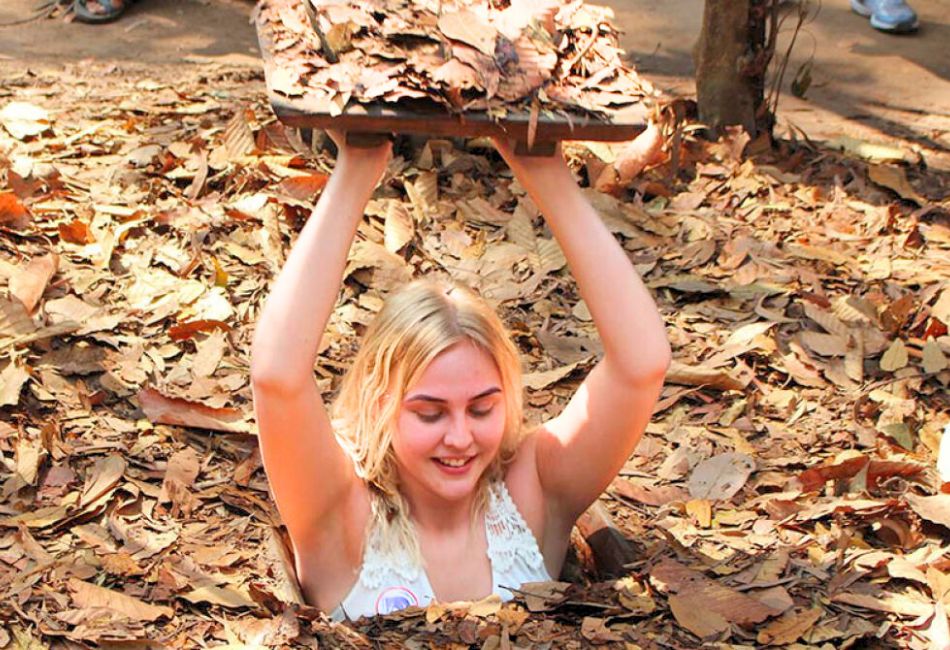

6.2 War Remnants Museum: Preserving the Past
War Remnants Museum is a museum in Ho Chi Minh City, Vietnam that specializes in researching, collecting, preserving and displaying evidence of crimes and consequences of the Vietnam War. The museum’s exhibits are emotional and thought-provoking, showcasing the impact of the war on Vietnamese civilians and soldiers. Visitors can see a range of artifacts and photographs, as well as personal stories from those who were affected by the war.



6.3 Dmz in Vietnam
The Demilitarized Zone (Dmz) or The Seventeenth parallel, was the provisional military demarcation line between North and South Vietnam established by the Geneva Accords (1954). The DMZ was a heavily militarized area, with both North and South Vietnamese forces stationed along its length. It was the site of the war’s bloodiest battles, including the Battle of Khe Sanh and the Tet Offensive.
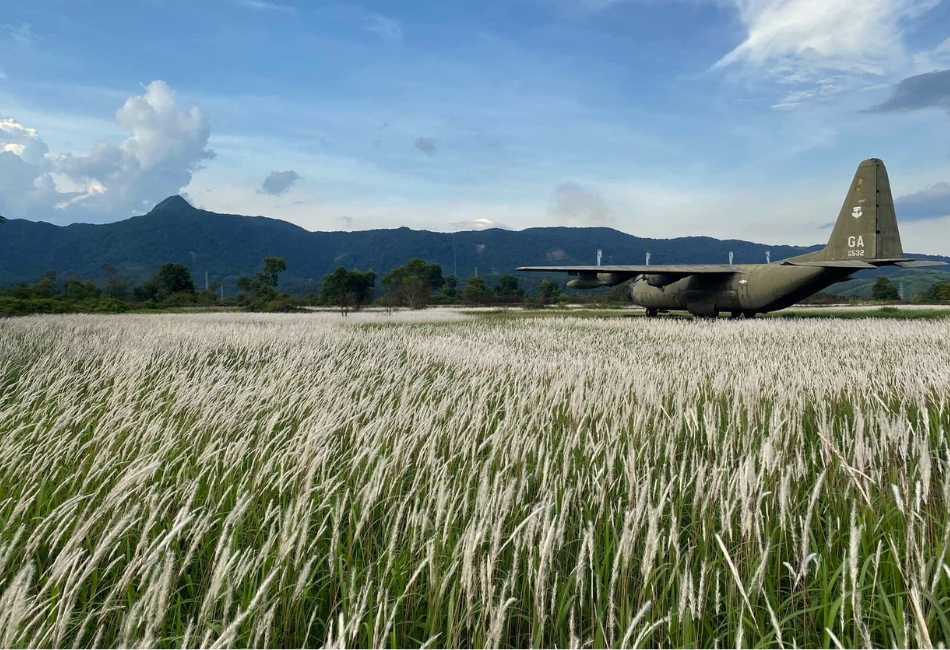

7. Experiencing the Festival in Vietnam
Festivals in Vietnam are renowned for their incredible diversity and vibrant colors due to the country’s rich cultural heritage and historical influences. With a blend of indigenous traditions, Chinese, and other Southeast Asian influences, as well as elements from French colonial times, each festival brings a unique flavor to the cultural tapestry of Vietnam.


7.1 Tet Festival – Vietnamese Lunar New Year
Tet Festival, also known as Vietnamese Lunar New Year, is the most important festival in Vietnamese culture. It is a time for families to come together and celebrate the start of a new year.
- Traditional Customs and Festive Atmosphere
This festival is characterized by its traditional customs and festive atmosphere. On Tet celebration, Vietnamese people prepare traditional foods, decorate their homes with flowers and plants, and clean their homes thoroughly. The atmosphere during Tet is lively and cheerful, with colorful decorations, music, and street performances. There are various street fairs and cultural activities such as calligraphy exhibitions, folk games and dances which attract many locals and visitors.
- Fireworks and Dragon Dances
Fireworks and dragon dances are an integral part of Tet Festival. The fireworks display on the night of New Year’s Eve is believed to ward off evil spirits and bring good luck for the coming year and Dragon Dances is believed to bring good luck and prosperity to the community.


7.2 Mid-Autumn Festival: A Celebration of Children
- Lantern Parades and Mooncakes
The Mid-Autumn Festival, also known as Tet Trung Thu, is a popular celebration of children and families in Vietnam. One of the highlights of the festival is the lantern parade, where children carry brightly colored paper lanterns in various shapes and sizes. Mooncakes are an indispensable delicacy during the Mid-Autumn Festival, and nibbling on them while sipping tea with loved ones is an essential part of the celebration. These cakes are often given as gifts to friends and family, symbolizing unity and sharing.


- Traditional Games and Folklore
The Mid-Autumn Festival in Vietnam features traditional games and folklore that are unique to the country. The most popular game is the lion dance. The performers wear colorful lion costumes dance to the beat of drums and cymbals on the streets.
Folklore surrounding the festival tells the story of Cuội, a man who was banished to the moon for misbehaving, and the legend of the Moon Lady, who grants wishes to those who gaze upon the full moon during the festival. These tales are often shared with children to teach them about Vietnamese culture and traditions.


0 Comment